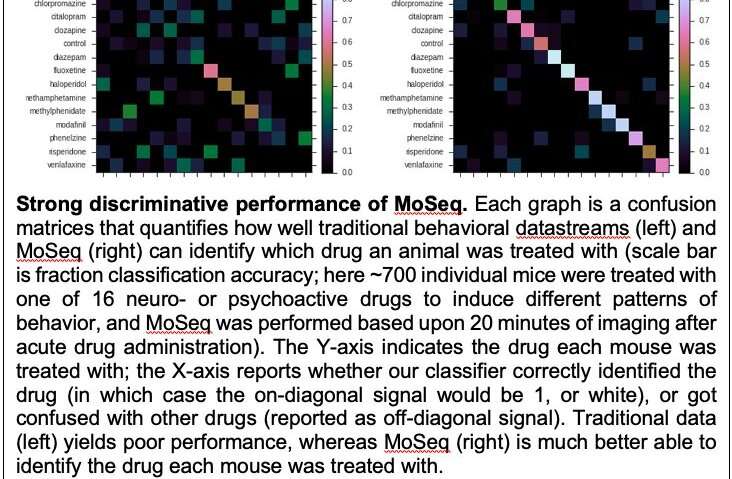HOME
A technique to study the behavior elicited by neuroactive and psychoactive drugs

To ensure that they prescribe useful and effective treatments to individual patients, doctors should be aware of how different drugs or therapeutic strategies influence people's behavior and neural functioning. As different drugs can have different effects on people based on their genetic and medical background, medical research should also try to identify patterns in how different substances affect different sub-groups of the population.
Several years ago, researchers at Harvard Medical School developed a machine-learning-based technique called motion sequencing (MoSeq) to study the behavior of animals and humans. This system is based on the pioneering work of renowned ethologists, who suggested that all animal behavior can be organized in modules, also referred to as syllables. These modules are essentially small, repeated motifs or stereotyped actions that the brain can arrange to create sequences, resulting in more sophisticated and coherent movement patterns.
Recently, the same team at Harvard Medical School showed that MoSeq can also be used to identify differences and similarities in the behavior elicited by a variety of neuroactive and psychoactive drugs. Their experiments, outlined in a paper published in Nature Neuroscience, were conducted on a large cohort of mice.
"MoSeq uses 3-D machine vision and machine learning techniques to discover recurrent modules—which we call syllables—in any given behavioral dataset," Sandeep Robert Datta, one of the researchers who carried out the study, told Medical Xpress. "Over time, we began folding in improvements into the system. We wondered how we could decide whether the changes we were making were helpful or harmful, and realized that taking advantage of the ability of drugs to change behavior could be a useful tool for measuring how sharp our lens was."
News Source